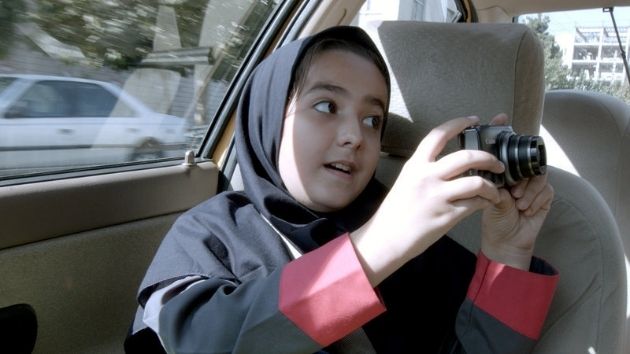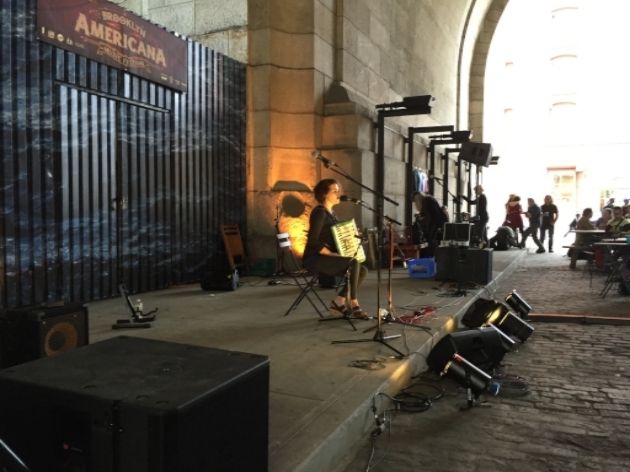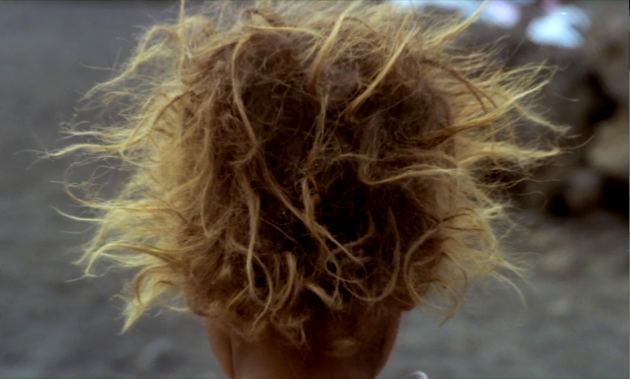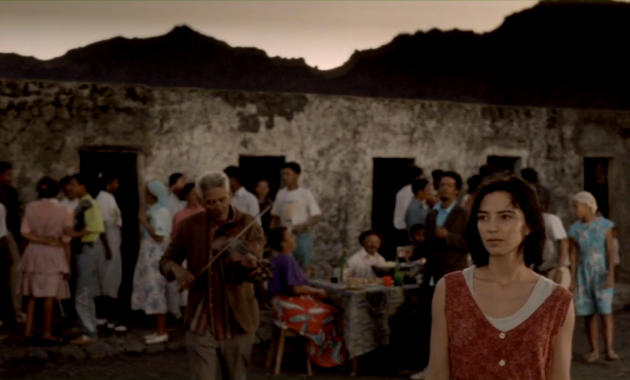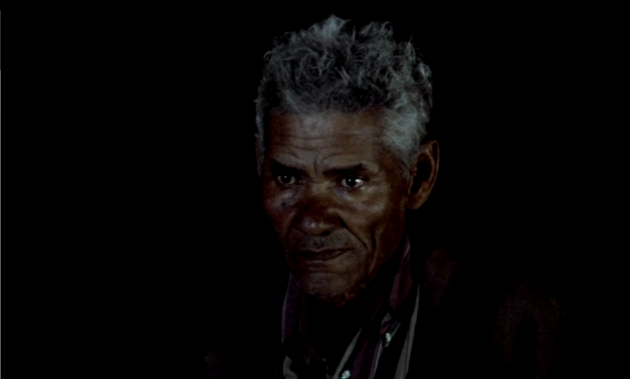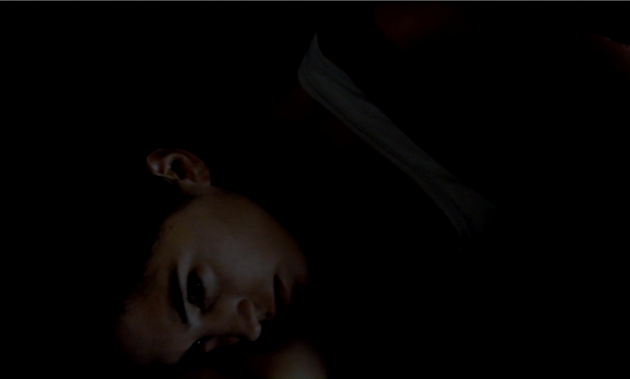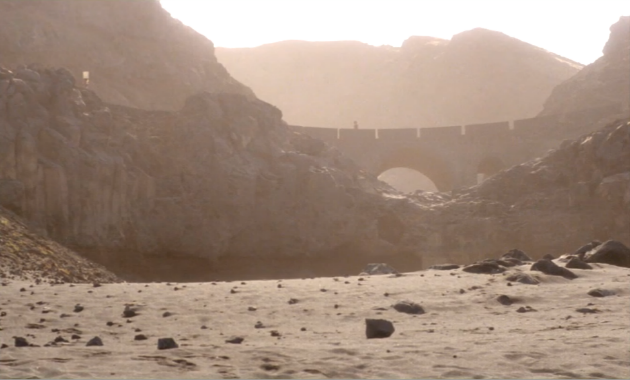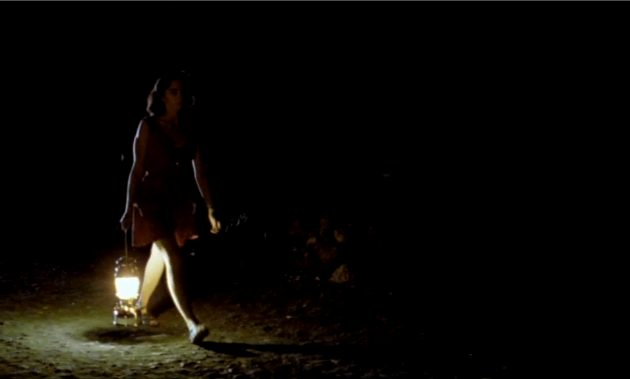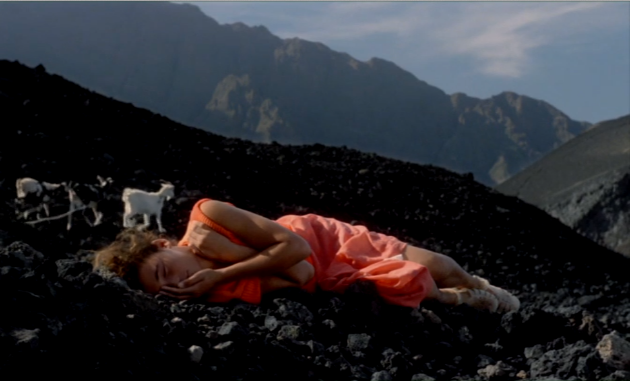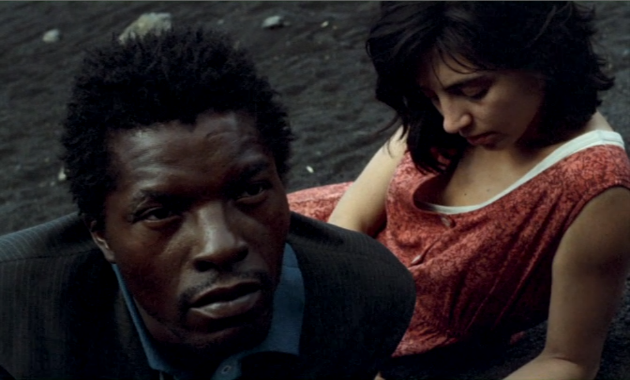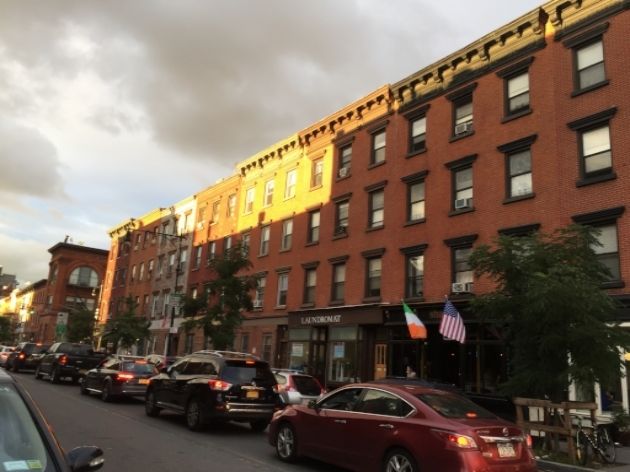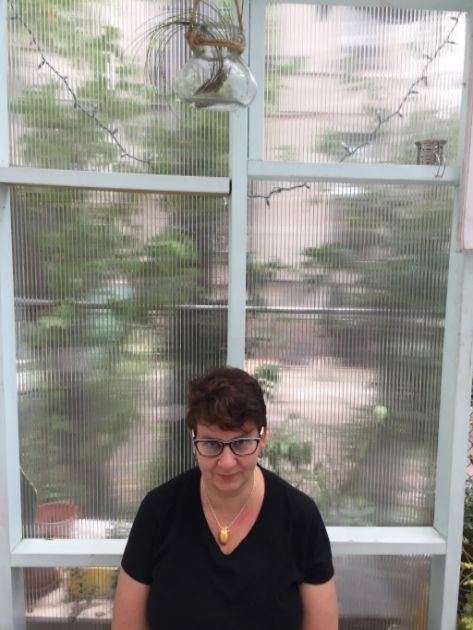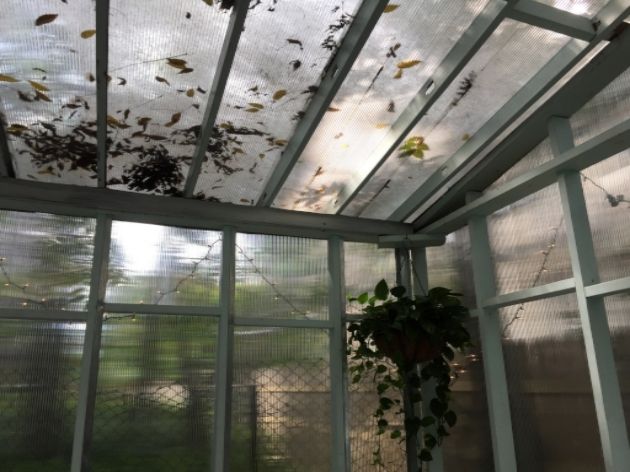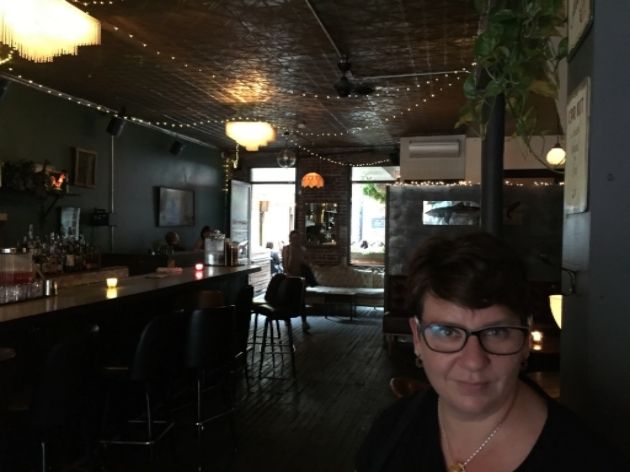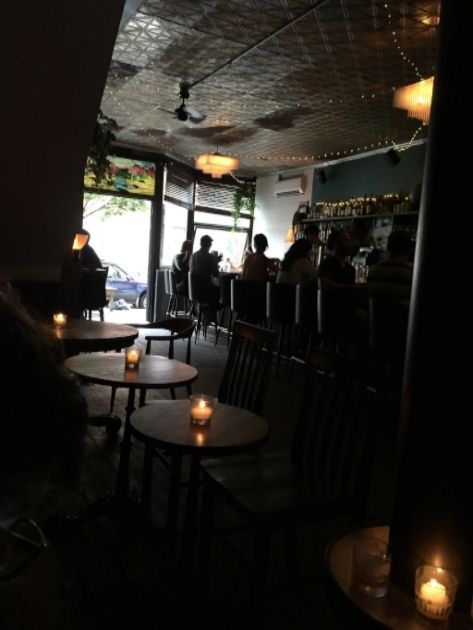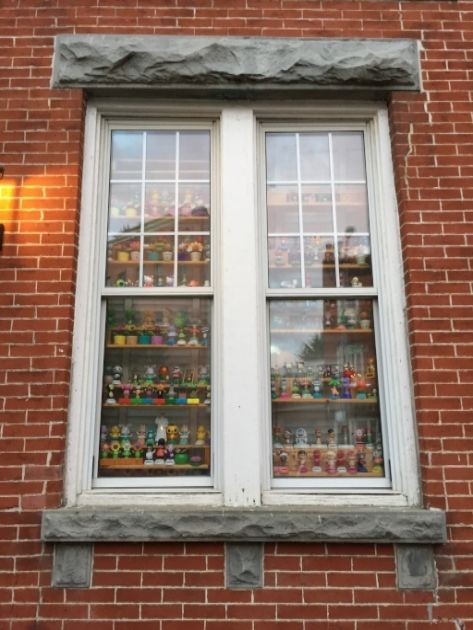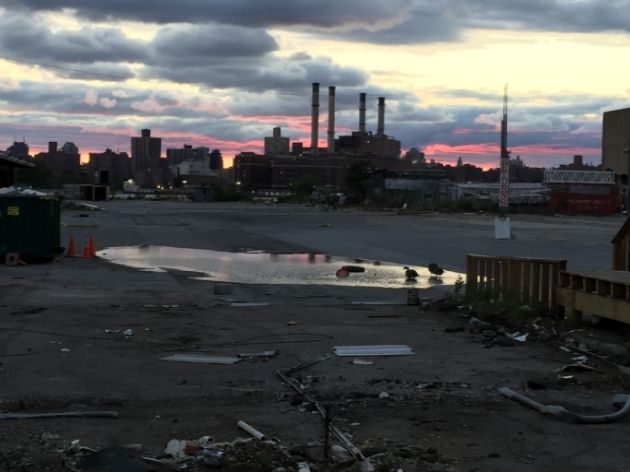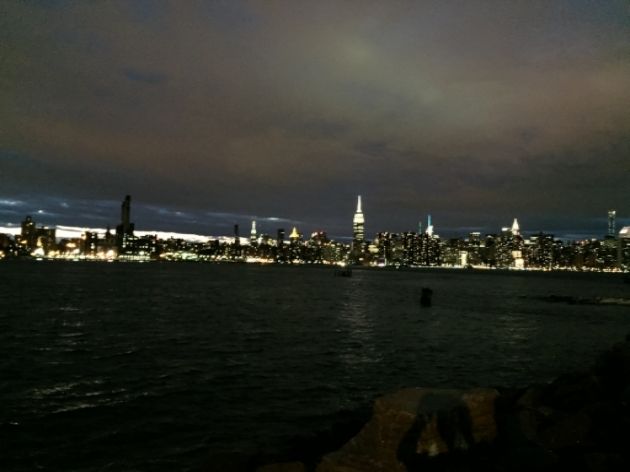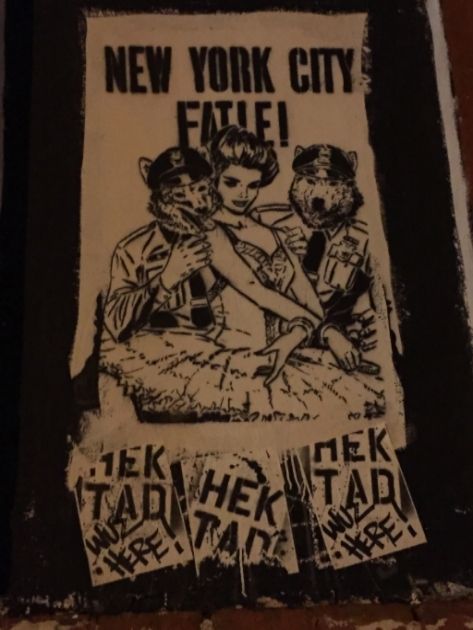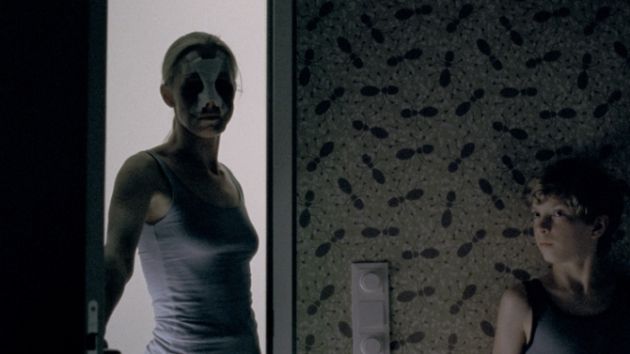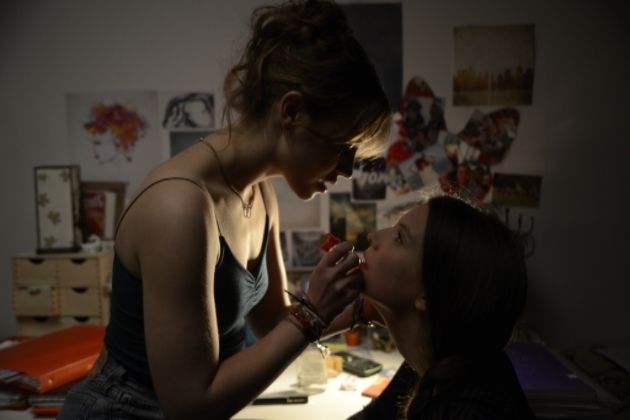
Veronika Franz and Severin Fiala, first time (in narrative form) filmmakers hailing from Austria, made a fantastic yet deeply disturbing film, Goodnight Mommy. It's been garnering much deserved critical acclaim around the globe ever since it made a splash in the Venice Film Festival last year.
The film's disturbing content makes sense when you consider Franz is married to Austrian auteur Ulrich Seidl (Import/Export, Paradise Trilogy and who serves as their producer) and Fiala being his nephew.
In person, they are very open and passionate film fanatics who finish each other's thoughts. They are an energetic pair whose enthusiasm for filmmaking is infectious. Our conversation was filled with film geekery and laughter.
GOODNIGHT MOMMY was great. But it was disturbing.
Veronika Franz (V): We ourselves want to be disturbed in cinema. That's what we expect a film to be. That it will do something, stir things up in us.
That's what Ulrick Seidl does. I got a chance to interview him when he was presenting the PARADISE TRILOGY.
V: Yeah, last year was it? Right. But these are different films. He presents kind of different reality with his films and we tend toward genre filmmaking.
Severin Fiala (S): I think it's maybe that we start at the same starting point but we walk different ways.
V: Yeah, that's it.
That's an interesting point. I know you guys have done a documentary on Peter Kern, a controversial Austrian director/actor.
S: It's the least successful Austrian film ever! [They explode with laughter.] It had 482 spectators.
V: We still think it's a good film, actually.
How different was it directing that and doing a narrative film?
S: From the outside point of view, you can say it was completely different. I mean one (Goodnight Mommy) was with a normal professional production. But I think every film is maybe the same -- circumstances might be different: in a documentary, you have a different working method to make things happen. But on one hand, you don't have Peter Kern shouting at you or you behave in a way that he shouts at you. And in Goodnight Mommy, things were completely different -- you have different means of achieving what you want. But it's the same drive to make things done.
V: And creating intimacy is important. It is difficult in terms of making narrative film to bring out intimacy, especially with child actors behaving naturally.
Exactly. Watching the film I was amazed by how natural those two kids were. You guys did a pretty remarkable job getting out those performances from them.
Well, thank you.
And with that dark subject matter...
V:We shot it chronologically. Like Ulrich's films we have a starting point, but don't give them the script and each day we just gave them basic suggestions, but reveal certain kind of information to them to keep their interests.
I see, I see.
V: We didn't give them dialog. But we sometimes had to tell them things because opposite of Ulrich's films, we had to get from point A to point B at some point.
S: Mostly we wanted to make the children feel that they could do anything in a scene, that they should feel free. But we had to find a way to navigate the way we wanted to have [things] happen. So the first thing we had to do was to tell the children that they don't need to know everything. Things will happen somehow but they don't need to know about the structure or anything.
V: It was tough in the beginning because you have like 30 people standing around you, waiting. A director tells the children something that they need to do.... It took some time for them to accept this environment.
S: It was impossible. It was cold the first day of shooting. We were really nervous. The children were there standing shivering. If you just have said, "now play," then they wouldn't have played it in the forest like they did. So we were running across the forest, throwing pine cones and we ended up in the frames because we were running around with the children. We wanted that natural feeling.
V: We moved in to the house that we were shooting at and decorated the house in such a way that they wouldn't feel it was like a stage, like strange surroundings for them. We used their twin-ness- we changed their roles--
S: Because it's not easy for children to repeat the same line over and over again. The delivery can become lifeless but we had to somehow rehearse certain scenes so we switched them around. We didn't know how the scene would go. It was the first time we were working this way. But the kids were really capricious. They wanted to do it better than the other one who did it before.
That's interesting. How was the casting process? I'm sure you've seen a lot of twins.
V: From Austria, we had about 130 pairs of boys from 9 to 11.
That's quite a lot.
V: Yeah it is. Austria is a very small country and we only looked in bigger cities. We didn't want them to have strong accents. We called many schools and of course they would know if they had twins in their schools and we would write them letters to invite them.
S: It was kind of normal. It wasn't difficult actually.
V: In the end we had three pairs who were really good. The last casting round was that we had an actress (in the mom role) tied to a chair. We told them, "OK, she's not your mom. Now try to find out if she is your mom or not. You can do whatever you want to find it out." Two pairs only circled the actress around asking, "Where is our mom, where is our mom?" But our pair (Lukas and Elias Schwarz), took a pencil--
S: And started toward the actress and we got up to stop them. [Laughs.]
V: They were very courageous. The thing is, we looked for beautiful children the audience could identify with.
S: But they should have some kind of secret to them below the surface. That was what we were looking for. But that's what we tried to convey everywhere in the film -- in the house, in the main actress, in the twins -- you could feel that there are secrets to them behind their masks.
Are Lukas and Elias completely identical, so that you can't tell them apart?
S: No, they are not.
V: When we first saw them, they were not identical enough. They had very different hair in the beginning and we had to call the hairdresser and told her to make them as close as possible because we thought they were not similar enough. But then, while shooting, we couldn't tell them apart. [Laughs.]
S: The continuity person had a hard time distinguishing them.
I was always wondering about whenever there were twins in a film if they actually shared some kind of connection?
S: They definitely do. First time we met them we were trying to play a game, 'Ich Seh, Ich Seh', which is referring to the film's original title, a children's game. We tried with them but it proved impossible because they always knew what the other one means.
V: We saw 130 pairs in casting, so we know about their connections. [Laughs.] We should make a scientific study about this. Rock paper scissors, they can play for hours. We even shot them playing it and we couldn't use it because it would never end!
Also there is a lot of doubling going on in this film. For instance, two directors, obviously. How do you divide your roles?
S: We didn't divide at all. We did everything together from the start until the last edit in the editing room, which is kind of easier for first time directors [as narrative filmmakers] because you are a lot stronger together when it comes to getting your idea through, against other people who constrain you with money or time or whatever. It's easier if there were two. And we know each other for a long time. We share the same vision of cinema and we want the same film. It's not about vanity or ego but it's all about the same film we want to make.
So even on set, you guys do everything the same.
V & S: Yes.
S: In a way we get extra chances to do it right. If we were shooting a scene once, one of us was talking to children and one of us would be behind the camera and we do it again and it's not good. And we do seven times and it's still not good, then we would switch roles and approach it the same way. But it would be completely different because we are different people and it would work.
V: You'd think that the process would be slow, but it's quicker, because we talk to each other right there and then, so we prevent each other from second guessing ourselves. It's the same in our writing process. We physically write together and talk our ideas through sitting at the same computer...
It was fascinating that in the first part of the film, about an hour or so, there is not much dialog. It's all visual storytelling.
V: Yes.
S: We understand that cinema is a story told in pictures. We approached it that way.
V: I always prefer films with least dialog. I hope I can make a film one day without any dialog.
The colors and everything are so intense in the film. Martin Gschlacht's cinematography is gorgeous. I've seen that Jessica Hausner film (LOURDES) he shot.
V: Yes, and he shot the Shirin Neshat film, Women Without Men.
I saw that! That was him too? And he shot THE WALL (DIE WAND)?
V: No, no. That movie was shot by many cinematographers, not just him. Only small part was shot by him. But yes, he is very good.
I saw the ending credit stating that it was 'shot in glorious 35mm'. I laughed at that. I am a film purist so I totally understand. But was there any consideration to shooting GOODNIGHT MOMMY in digital?
V: They recommended us shooting in digital.
S: Yeah it was the question of money and time and many suggested us shooting in digital since we are first time directors -- too much film stock, especially shooting with children and so on.
Thankfully, we had a producer (Ulrich Seidl) who understood our artistic vision and who fights for us to do that, which is rare for a producer.
V: We could convince him that it was a matter of aesthetics. And as you know, the process of shooting film on set is a lot different than just pushing a button and hoping something will happen. There is a discipline that goes with it. It's a complete concentration that you need to have shooting film.
This is what filmgoers don't really know about shooting film instead of digital.
S: Another thing is that shooting on film, it's the chemical process of shooting on a film stock that is fascinating because no one really knows how that really will turn out. It's not a perfect medium. We strive for perfection and shooting in film doesn't really give you that, which is fascinating. In digital filmmaking, the idea that you can make it look perfect afterwords seems strange to me.
V: The crazy thing is that Martin Gschlacht showed us that what they do now is digitally... you can... how do you say?
Repaint?
V: Yes! They can even paint certain things in where it didn't existed! It's a complete fake! Why fake something? That's completely fake, I think.
The process is completely backward: When you shoot film, you choose a stock and you build it from there. When you are shooting digital, you start it in edit stations.
V: Yes, exactly.
S: It's bad for your concentration because you think you can do it afterwards. I like where you have to make decisions while you are on set. Why would be on set if you don't make any decisions?
Exactly.
S: We don't like that way of thinking in the digital world at all. We like to have fun.
I have to say that the film is technically brilliant. It's beautiful and the editing is amazing. I want to ask you about some of the visual references. Especially ones in the forest and the twins exploring darkness. Was there something that you had in mind as visual inspiration?
V: One of the visual inspirations was an Austrian artist, Gottfried Helnwein. How do I describe his art... a pop artist? He is very famous. Inspiration in films, we watched all kinds of films for twenty years together and we love horror films. We have quite a big collection in our heads.
S: We wanted to not so much as emulate other films but going through the psychological aspect of two children. The thing was we wanted to watch some horror films with Martin but he is not a fan of that. He was afraid to watch some of the films we wanted to show! [They laugh.]
That's hilarious.
V: We ended up watching one of Dario Argento's films together with him. He was very nervous and excited.
What we wanted to do was playing with nature/indoors, light/darkness. The twins always want to go outside and play in nature. The mother is always inside as if she's a prisoner. The twins like the sun and light. Mother not much. We play around with that concept for two thirds of the film. Then it becomes more like cinema verité with handheld shots at the end. The blinds are open and the light comes in. That's why the horror and violence is more effective because everything is out in the open and light.
Right, right. But it's not all horror. There are many funny moments in the film too. Like, the--
V: The Red Cross
Yeah exactly. I noticed all the small moments in the film. Like the drunk with the accordion...
V & S: Oh yeah!
V: I'm so glad you mentioned him! He's one of our favorites. Almost no one mentions him! We didn't like him too much but we shot a lot of him. We had a hard time to cut the footage of him down to what was included in the film.
S: Because it was too much.
V: But he was a real character.
S: If you talk to him, you never understand him. He always shouts something but we can't make sense out of what he's saying. He lives in this kind of fucked up environment, more or less. He has a beautiful house but he doesn't live in there because he doesn't want to destroy it. He wants to make a brothel out of it. Or at least that's what I understood.
V: What unifies all these characters is that they are all real people. The Red Cross are real Red Cross workers because Severin knows them from work.
S: Yeah I was in The Red Cross.
Oh, I didn't know that!
S: Those are my colleagues. We wanted to have some real life bleeding in the film and it just worked out that way.
It was just announced that Goodnight Mommy is the official entry from Austria for Best Foreign Film at next year's Academy Awards. The film opens nationally on Friday, September 11.
